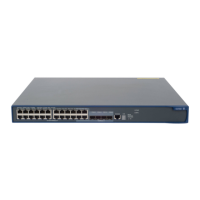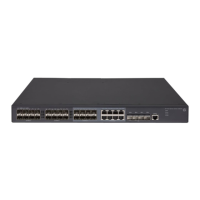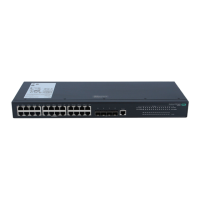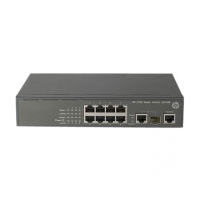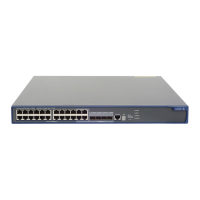368
Figure 91 Network diagram
Configuration procedure
1. Configure IPv6 addresses for interfaces. (Details not shown.)
2. Configure OSPFv3 basic functions:
# On Router A, enable OSPFv3 and configure the router ID as 1.1.1.1.
<RouterA> system-view
[RouterA] ospfv3 1
[RouterA-ospfv3-1] router-id 1.1.1.1
[RouterA-ospfv3-1] quit
[RouterA] interface ethernet 1/2
[RouterA-Ethernet1/2] ospfv3 1 area 1
[RouterA-Ethernet1/2] quit
# On Router B, enable OSPFv3 and configure the router ID as 2.2.2.2.
<RouterB> system-view
[RouterB] ospfv3 1
[RouterB-ospfv3-1] router-id 2.2.2.2
[RouterB-ospfv3-1] quit
[RouterB] interface ethernet 1/1
[RouterB-Ethernet1/1] ospfv3 1 area 0
[RouterB-Ethernet1/1] quit
[RouterB] interface ethernet 1/2
[RouterB-Ethernet1/2] ospfv3 1 area 1
[RouterB-Ethernet1/2] quit
# On Router C, enable OSPFv3 and configure the router ID as 3.3.3.3.
<RouterC> system-view
[RouterC] ospfv3 1
[RouterC-ospfv3-1] router-id 3.3.3.3
[RouterC-ospfv3-1] quit
[RouterC] interface ethernet 1/1
[RouterC-Ethernet1/1] ospfv3 1 area 0
[RouterC-Ethernet1/1] quit
3. Configure OSPFv3 IPsec profiles:
# On Router A, create an IPsec transform set named trans, and set the encapsulation mode to
transport mode, the security protocol to ESP, the encryption algorithm to 3DES, and authentication
algorithm to MD5. Create an IPsec profile named profile001, specify the manual mode for it,
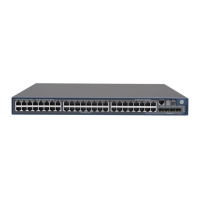
